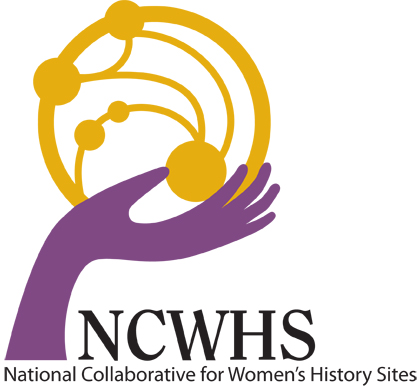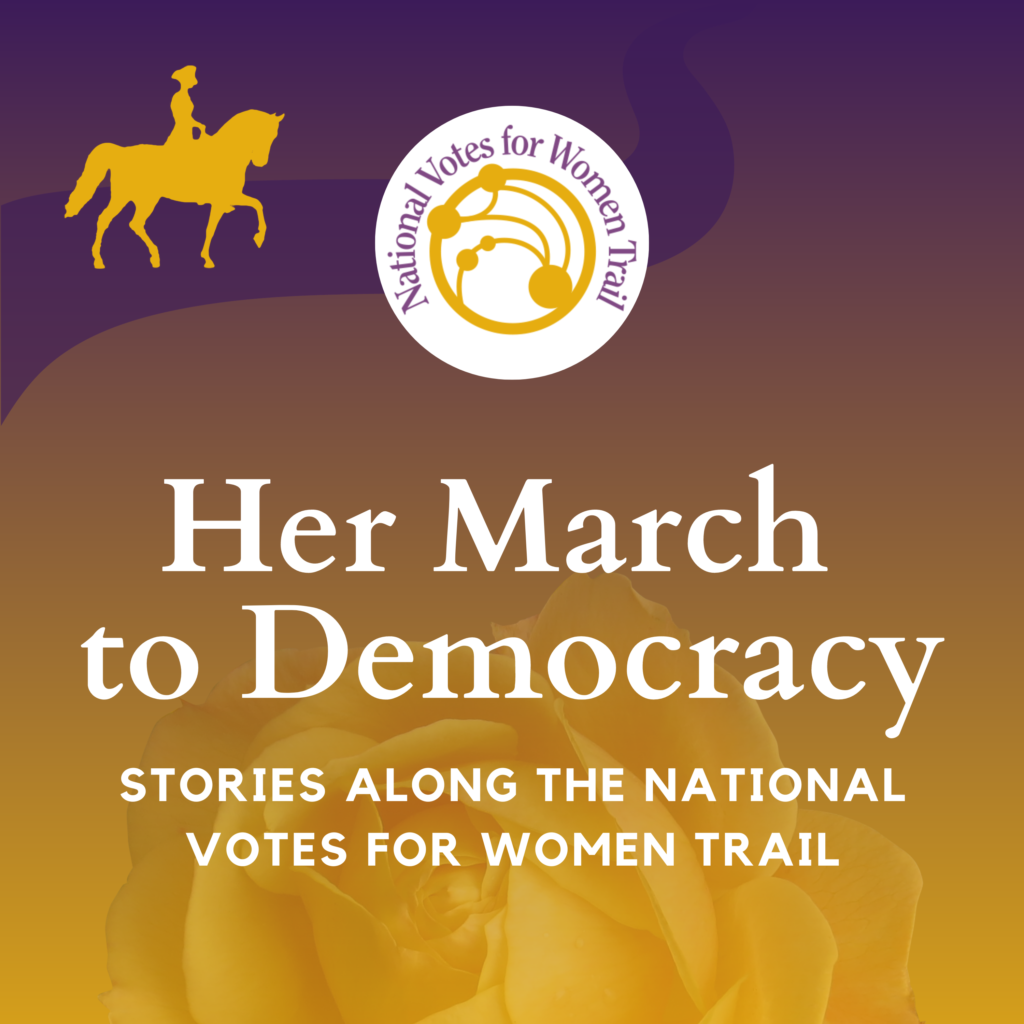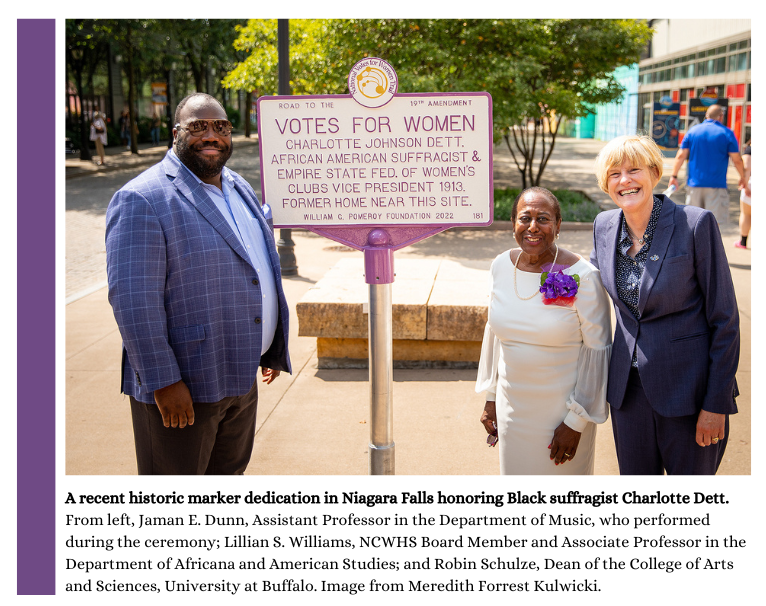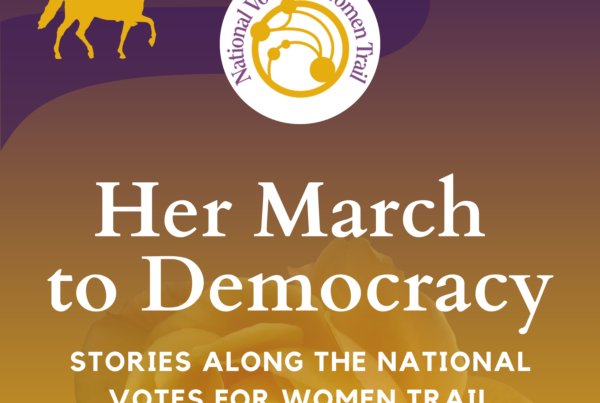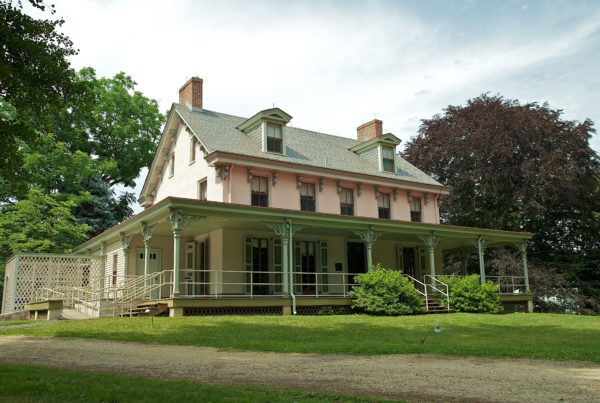New from the National Collaborative
NCWHS Launches New Podcast that Highlights How American Women Won the Vote with Stories Along the National Votes for Women Trail
Telling Women’s Stories: A Toolkit for Historic Sites and Museums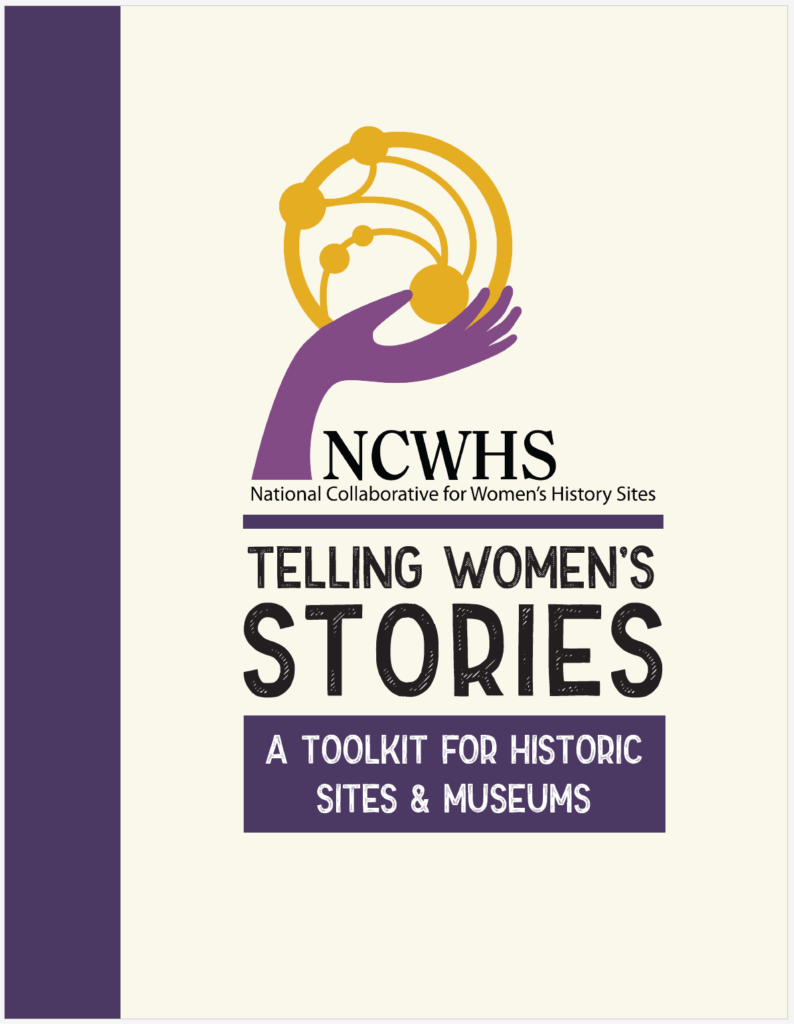
Support Righting Women’s History
NCWHS has launched our third decade of activism with a strategic plan that focuses on projects and partnerships to advocate for more – more women’s history in the news, more women’s stories told at historic sites, more sites that honor women. Support the future of history with a donation or by becoming a member today! Here are three current projects that your contributions will support!
Clara Barton National Historic Site
The future of the first women’s historic site in the National Park system, the Clara Barton National Historic Site in Glen Echo, Maryland, was at risk. We got to work, leading a series of online discussions this summer with historians, the National Park Service, and other stakeholders to reimagine the future of this important place. As part of this collaborative effort, we offered recommendations on themes that will contribute to the National Park Service’s interpretation. The site renovations and new frameworks will bring Clara Barton’s story to life.
Telling Women’s Stories: A Toolkit for Historic Sites & Museums
Do you know a small museum that needs resources for telling a more inclusive story? We’re excited to announce our new online toolkit that will help staff and volunteers at your favorite organization uncover the women’s history at their site or museums. It has research tips, successful case studies, and more. Find the Toolkit on the NCWHS website and share this link.
National Votes for Women Trail
The NVWT keeps growing! We now have more than 2,400 sites in the online database (www.nvwt.org), as well as accompanying lesson plans with videos. We will soon launch a series of podcasts about the Trail in ten different states to explore the rich diversity of the suffrage movement in all parts of the country.
There is more work to do—and untold stories to discover! Please donate today so that we can continue to shine a light on women’s history at sites everywhere in America.
Your one-time or recurring tax-deductible donation can be made by check or through our secure, online payment portal. Checks can be sent to NCWHS c/o Alice Paul Institute, P.O. Box 1376 Mt. Laurel, NJ 08054.
The NCWHS Board of Directors thanks you for your support!
Ida Jones
Andrea Malcomb
Judith Wellman
Robyn Young
Lucy Beard
Barbara Lau
Cheryl Harned
Erica Ciallela
Joanie DiMartino
Joanne L. Goodwin
Jolene Rickard
Lillian S. Williams
Liz Almlie
Nancy Brown
Paula F. Casey
Theresa McCarthy
View our National Votes For Women Trail database! If you would like to add to our growing list of sites, please complete this form. If you need assistance completing the form, see our tutorial.
Join us on Social Media!
National Collaborative for Women's History Sites
The National Collaborative for Women’s History Sites (NCWHS) supports and promotes the preservation and interpretation of sites and locales that bear witness to women's participation in American life. The Collaborative makes women's contributions to history visible so that all women's experiences and potential are fully valued. Be a part of our mission -- Join the NCWHS today!

Women Make History at the Paris 2024 Olympics | Smith School
For the first time, equal numbers of male and female athletes will compete in the 2024 Paris Olympics. Celebrating gender parity, this milestone highlights the progress in women's sports since Paris 1924, where only 4.4% of athletes were women.

Seven women recognized for saving Savannah's historic buildings in 1950's
Seven women credited with kickstarting Savannah, Georgia's historic preservation movement seven decades ago are getting more public recognition.

The Many Lives of Harriet Tubman
Tiya Miles’s Night Flyer is a landmark biography of one of 18th-century America’s most important figures.

The Adventures of Young Indiana Jones: Fighting for the Vote: Women’s Suffrage in America - Fantha Tracks | Daily Star Wars News
Watch the third of the JAK documentaries produced to accompany the release of The Adventures of Young Indiana Jones on DVD in 2007.

Protest Interrupts ‘Suffs’ Performance, Arguing It’s a ‘White Wash’ of Suffrage
Protestors interrupted a performance of “Suffs” on Broadway July 2, chanting and hanging a banner claiming the show whitewashes the women’s suffrage m...

How women shaped early America
We shouldn't forget these revolutionary mothers.
